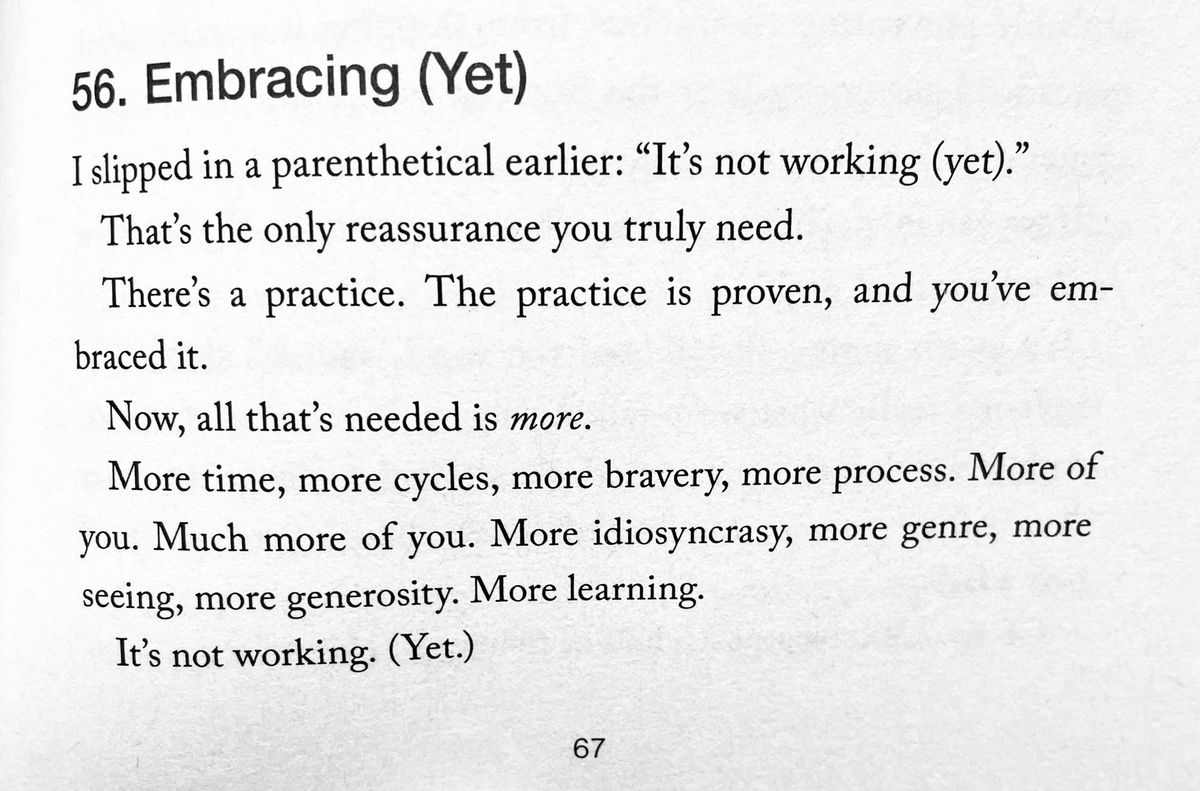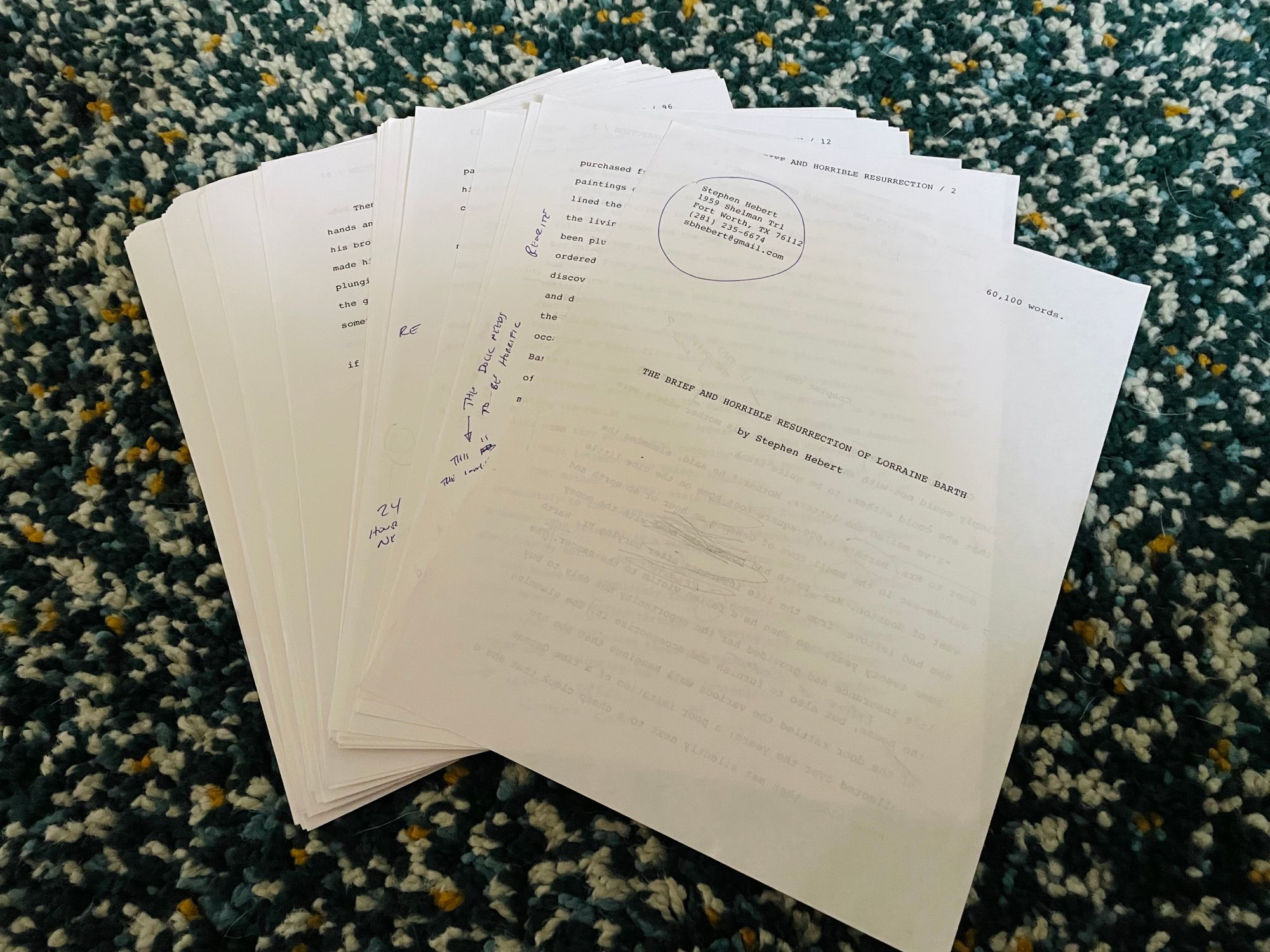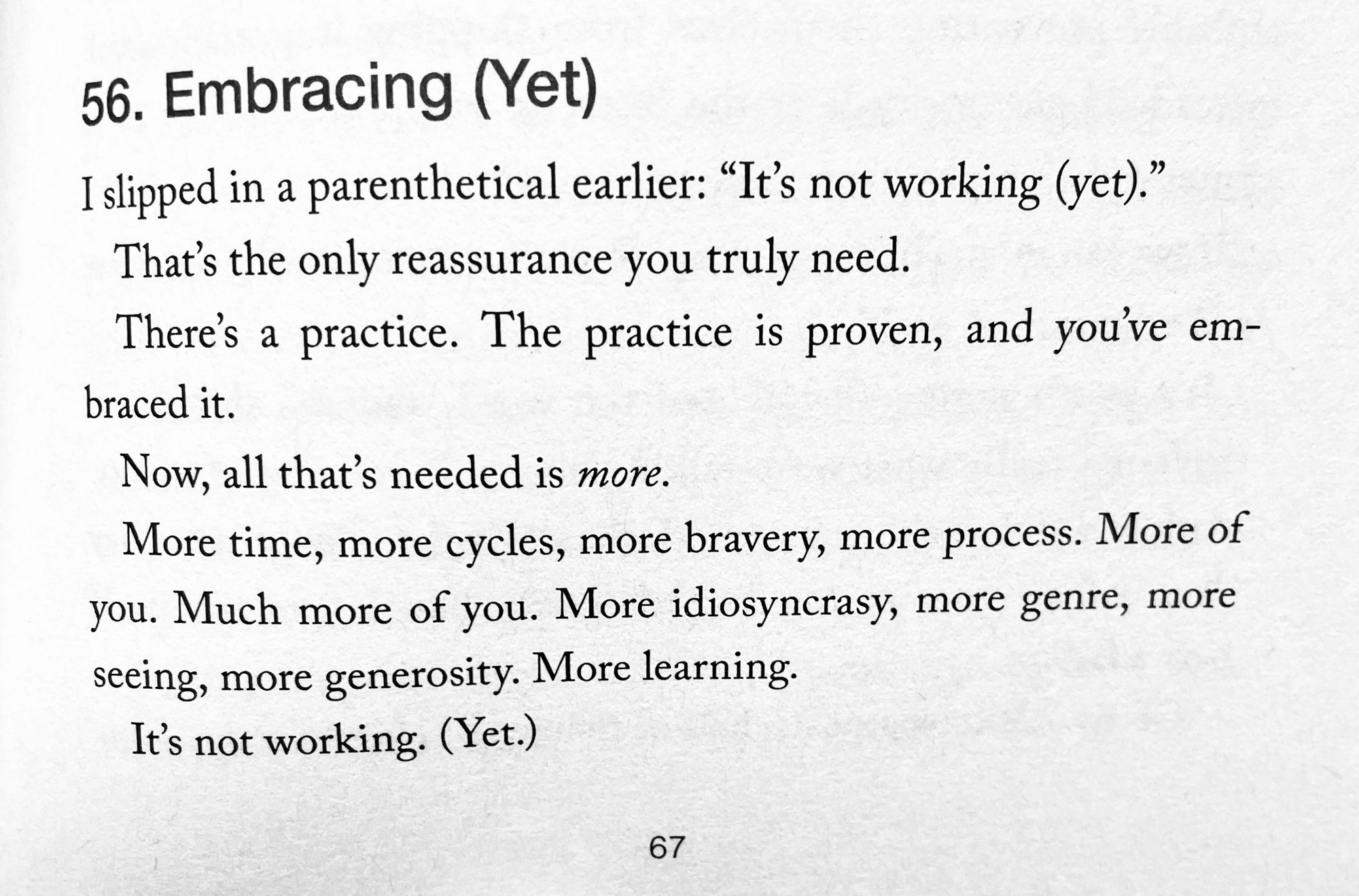Doing a New Thing
One simple way to create some pressure: deadlines. Announcing a new website: it's not working yet (inwy).

Looking back at 2021, I feel like I did a lot of good work. Unfortunately, not much of that good work was on what I care about most: my writing! I wrote relatively few blog posts across my various blogs, and I wrote even less fiction.
Don't get me wrong; this wasn't lost time. I was able to spend more than 10,000 minutes in workouts, plus thousands more in meditation. I had a blast with Gus on the golf course. And I continued to live and laugh with my spouse, Natalie. I did a lot of work on the self, I guess, but not on my creative projects.
Sooooo...I've got creative work to do. One of the strategies that often helps to get me going is pressure. By putting a little pressure on myself, I often am able to jumpstart projects and make progress toward a goal. How do we create that pressure? Well, there's lots of options out there, but one simple way to create some pressure: deadlines. Creating deadlines can help us to feel responsible for the work; they help us move beyond the I-don't-feel-like-it's to the well-this-is-what-we-gotta-do's.
Therefore, I'm announcing the launch of a new website: it's not working yet (inwy).

The big idea for the site is to think about the creative process. If we're going to practice any craft — writing, painting, sculpting, teaching, selling, rocket surgery — then we have to have some kind of method for doing that. Our practice often leads to failure, but, thanks to the power of "yet," we can understand the failure as part of the process. We look at the product and we might say, "It's not working yet," and then we get back to work.
Below, I'll put the first post (in its entirety) so that you can read it for yourself, but I also want to highlight the main project for this site: (Re:)write. (Re:)write is a regular newsletter devoted specifically to the work I'm doing to rewrite a novel that I drafted in 2017. Each post will contain a kind of journal of the process along with what I'm learning along the way. Here's the first issue:

Voila! Pressure created by deadlines for blog posts. With the launch of this project in a public way, I now feel some pressure to put the next issue out there. But, since this is a kind of hyper-vulnerable journal about my creative process as I do something I've put off for four effing years, I've got to do the revision in order to have something to write about in the newsletter.
Here's a taste of what is (very tentatively) to come in (Re:)Write:
- (Re:)write #1: Taking Stock
In this issue, we just outline the project. Where did this come from? What are we doing? Why would anyone want to go back and look at something they wrote four years ago? I also take you through the opening paragraph of the novel and why it is the way it is. (NOTE: I'm 99% sure I'm about to change the opening...again...) - (Re:)write #2: Tools of the Trade
What tools am I gonna use to accomplish this? Microsoft Word? Hell no! This issue will talk about writing longhand, word processing in apps like Scrivener and Ulysses, etc. I'll also tease out some thoughts I have about naming characters and why some names in the novel are changing. - (Re:)write #3: The Setup & The Process
When you've got 300 pages of text that you need to revise, you've got to think about how best to set up that project. When you're like me, and you really don't want to lose anything, you've got to think about that too. - (Re:)write #4: Snapshots
Here we'll continue looking at the process by thinking about how and why we save text and track changes. I'm developing a method for this and I'll show you what I do (and evaluate how well it's working). - (Re:)write #5: Openings
The opening of a novel is super important. You've got to pack a lot into just a few pages: character, setting, plot, etc. Not only that, but you've got to start making a claim for your readers to spend the next umpteen hours of their lives in your novel. We're going to get brutal with the opening of my novel here. (Potential spoiler: I've already got several different versions of it. Argh!) - (Re:)write #6: Whither Paper
I took the time (and resources) to print out a copy of the manuscript. Am I using it? Nope! Why? Is it because I've got some wicked vendetta against trees? I don't think so... - (Re:)write #7: Doing Things
When you have a big project like this, how do you keep track of what you'd like to do? How do you decide what to work on next? How do you leverage all the little systems you've got in place to ensure that you're going to get up and do the work? How do you make it easy to continue your practice? Let's see what's working (and what isn't). - (Re:)write #8: Status Update (Chapter One)
At last, eight issues in, and we're finally ready to think about the rewrite of chapter one. Where did it start? Where did it go? How am I feeling about it? - (Re:)write #9: Blogging the Rewrite
Writing for a blog is very different from writing for a novel. In this edition, we'll explore what the differences are and what my method is for capturing notes for the blog and documenting the rewrite. - (Re:)write #10: Introducing a New Character
As it is right now, chapter two puts us in a new character's world. How do we make that transition from one character to another? How do we adjust the voice so that it fits with the novel but still feels like we're hopping into a different character's perspective?
Wow. That's a lot lined up, and it only gets me to the start of the second chapter. It's gonna be a journey, y'all. If you're interested in joining me, please go over to inwy and subscribe!
Now, as promised, here's that first post from inwy.

The Power of Yet
My writing has been flagging, y'all. I've found other things to concentrate on. Mostly healthy things, to be honest. Meditation. Spin cycling. But I've also distracted myself with new apps (loving Craft and Things, by the way). If I look at my stats in Scrivener or in Ulysses, I'm not hitting daily goals. I'm writing practically nothing.
This, of course, is the result of our most unwelcome guest: Resistance.

If you're not familiar with Resistance, you can see the mugshot above. That's him. He's a devilish little turd, to be sure. You may not know him as "Resistance." You might call him by another name: "Sloth" or "Laziness." You might recognize him as the distraction that keeps you from doing what it is you really want to do. Around here, we call him Resistance because that's the name Steven Pressfield gave him in The War of Art (which you should read).
Resistance is strong.
Resistance is powerful.
Resistance is real.
In the midst of these creative doldrums, I somehow came across a link to a book by Seth Godin called The Practice. I went to my local library and picked it up. Here was a text that took The War of Art seriously, that understood the life of the artist, and that spent more than 200 pages providing artists with a gigantic pep talk. In and amongst all of this pep, on page 67, I found "56. Embracing (Yet)." It knocked me on my ass.
I've been at this writing thing for a while, and one thing I know is that if you keep working at it, if you keep tinkering, then it will eventually come out. It may not come out the way you want it. It might be a bit funky. But, like kintsugi, it'll have its own beauty. But you gotta keep working at it.
This is the power of yet.
It's not working (yet).
It's not ready (yet).
It's not finished (yet).
No. Not yet. The "yet" is not "never." It's the opposite! It tells us that we can keep writing, painting, sculpting, honing, working. We can build, we can grow, we can make and remake and remake again.
As Godin puts it in The Practice:
Now, all that's needed is more.
More time, more cycles, more bravery, more process. More of you. Much more of you. More idiosyncrasy, more genre, more seeing, more generosity. More learning.
That's what inwy is all about: the process of making something. In these posts and in these pages, I want to provide a balm for the artist's soul, a shot of encouragement. I want to do that with openness and vulnerability, with brutal honesty about how we go about making things.
If you're interested in that conversation, if you're a maker of things, or if you're just damned curious about the creative process, then subscribe and follow along!

Thanks for reading! Again, I encourage you to check out (read: subscribe to) all of my work:
- ROOTED. Thoughts about education written by educators.
- the unruly buddha. Surviving suburbia while living a contemplative life and practicing zenful disobedience.
- it's not working yet. For artists who are trying to make it work.
Your subscriptions (and voluntary donations) keep the work moving and are greatly appreciated. :)